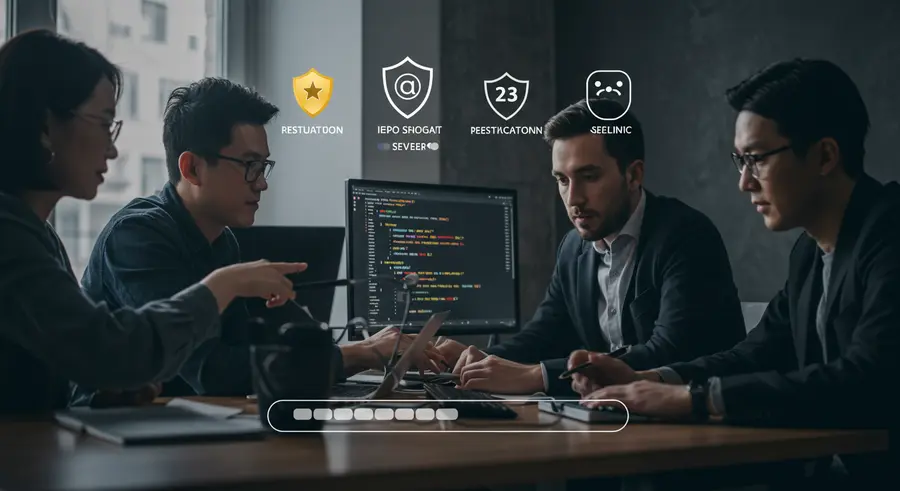Gamifying Code Reviews: Elevating Quality and Engagement

Code reviews are a cornerstone of high-quality software development. They help catch bugs early, ensure adherence to coding standards, share knowledge, and foster team collaboration. However, they can sometimes be perceived as a tedious or confrontational task, leading to decreased participation and effectiveness. This is where gamification steps in, transforming a routine process into an engaging and rewarding experience.
The Core Idea: Making Reviews Fun and Effective
Gamifying code reviews means applying game-design elements and game principles in a non-game context – in this case, the structured process of examining source code. The goal isn't to turn reviews into a trivial game, but to leverage human psychological drivers like achievement, competition, and recognition to motivate developers to participate more actively and provide constructive feedback.
Key Gamification Elements for Code Reviews
- Points and Scoring: Assign points for various review activities. For example:
- Finding critical bugs: 100 points
- Suggesting major improvements: 75 points
- Providing clear, actionable comments: 50 points
- Reviewing a pull request quickly: 20 points
- Having your code reviewed with minimal issues: Bonus points for the author!
- Badges and Achievements: Award virtual badges for specific accomplishments:
- "Bug Slayer": For finding a high number of critical bugs.
- "Mentor": For providing excellent educational comments.
- "Code Guardian": For consistently reviewing code thoroughly.
- "Speed Demon": For rapid, yet quality, reviews.
- "Clean Coder": For authors whose code consistently passes reviews with few issues.
- Leaderboards: Display rankings of top reviewers based on points or number of reviews. This can foster healthy competition and recognize top contributors. It's crucial to ensure leaderboards promote positive behavior and don't demotivate lower-ranked individuals.
- Challenges and Quests: Introduce time-bound challenges, such as "Review 5 pull requests by end of week" or "Contribute to three different repositories' code reviews."
- Progress Bars and Visualizations: Show individual and team progress towards review goals or quality metrics. This provides a sense of accomplishment and encourages continued effort.
- Narrative and Theming: While less common, creating a light narrative around code quality (e.g., "Defend the codebase from technical debt invaders") can add an extra layer of engagement.
Benefits of Gamified Code Reviews
Implementing gamification in your code review process can yield significant benefits:
- Increased Participation: Developers are more likely to engage in reviews when there's a clear reward or recognition system.
- Improved Code Quality: More thorough reviews lead to fewer bugs, better maintainability, and stronger adherence to coding standards.
- Enhanced Learning and Knowledge Sharing: Reviewers learn from inspecting others' code, and authors gain insights from feedback. Gamification can encourage sharing best practices.
- Faster Feedback Cycles: Incentives for quick reviews can reduce bottlenecks in the development pipeline.
- Stronger Team Cohesion: Collaborative challenges and recognition foster a sense of shared responsibility and teamwork.
- Positive Culture: Transforms code review from a chore into a valued, even enjoyable, part of the development workflow.
Potential Pitfalls and How to Avoid Them
While beneficial, gamification must be implemented thoughtfully:
- Focus on Quality, Not Just Quantity: Ensure your scoring system rewards thoughtful, constructive feedback, not just the sheer number of comments or reviews. Penalize low-quality or irrelevant comments.
- Avoid Unhealthy Competition: Leaderboards can be demotivating if not managed well. Consider team-based challenges or personal progress tracking alongside individual rankings.
- Maintain Fairness and Transparency: The rules and scoring mechanisms should be clear, consistent, and perceived as fair by everyone.
- Don't Over-Gamify: The core purpose is to improve code quality, not to distract from it. Game elements should support, not overwhelm, the review process.
- Integrate Naturally: Gamification should feel like a natural extension of the existing workflow, not an additional burden.
Practical Implementation Tips
Start small and iterate. You don't need a complex system from day one. Begin with simple points for completed reviews, then gradually add badges for specific achievements. Leverage existing tools where possible:
- Git Platforms: Many platforms like GitHub, GitLab, and Bitbucket offer APIs that can be used to track pull request activity and comments.
- Custom Scripts: Simple scripts can parse review comments and assign points.
- Dedicated Tools: Some project management or code quality tools might have built-in gamification features or integrations.
Remember to gather feedback from your team. What motivates them? What feels rewarding? What feels like a chore? Adapt your gamification strategy based on their input. Tools for financial market sentiment analysis, like those providing AI market insights, thrive on data interpretation. Similarly, successful gamification in software development relies on understanding developer behavior and preferences. For further reading on software development best practices, consider exploring resources like Martin Fowler's articles on bottlenecks or the extensive documentation on Microsoft Docs for C# programming. You can also find valuable insights on freeCodeCamp for practical coding exercises.
Conclusion
Gamifying code reviews is a powerful strategy to elevate both the quality of your codebase and the engagement of your development team. By carefully designing reward systems, fostering healthy competition, and recognizing contributions, organizations can transform a critical but often unglamorous task into a dynamic and highly effective component of their software development lifecycle. It's about turning mandatory into motivated, and good code into great code.